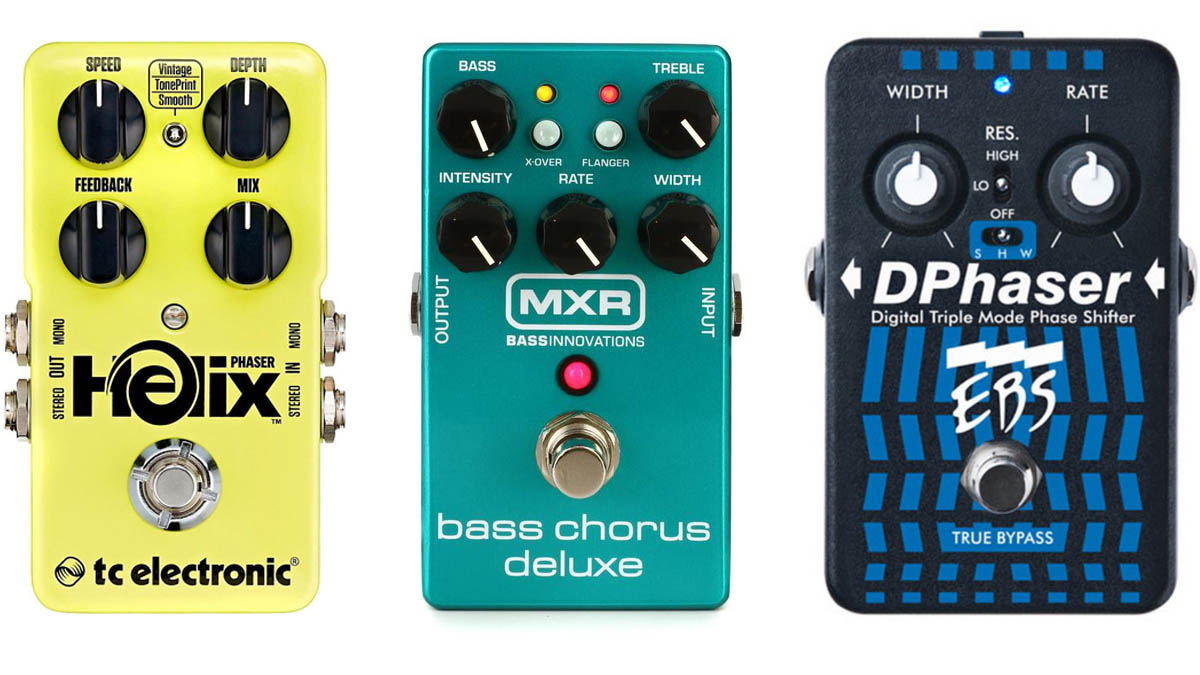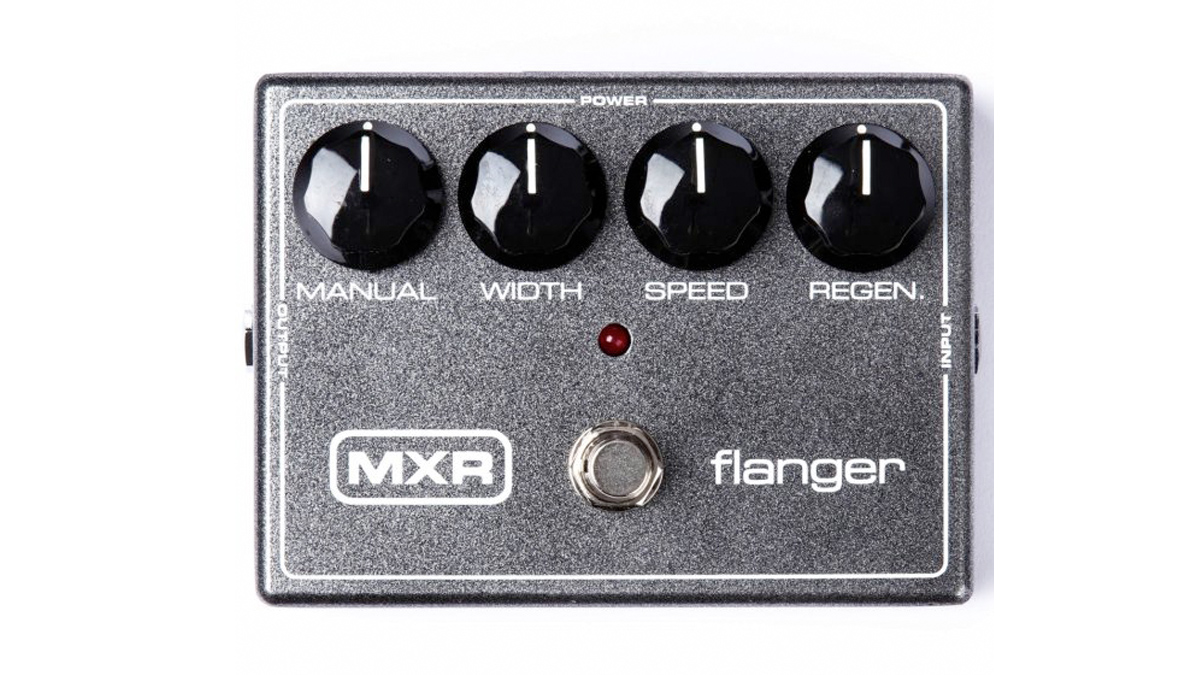How to use modulation pedals on bass
Looking to add some phaser, chorus or flanger to your low-end rumble but don't know where to start? Apply within!

Well, hello there! As we come to the end of another bass-packed issue, let’s sign off with part four of my column - stepping through the most popular pedal types on a pedalboard, what they are and some tips on how to use them.
My previous columns have covered types of compression, drives and equalization, so let’s take a look at modulation pedals, or in common parlance, chorus, flange and phase.
What's modulation, then?
Well, generally speaking, in electronics, it means using one signal to manipulate another. The group of analog effects that we are looking at today all use some method of modulating your instrument signal to create some exciting effects.
Give us some examples!
All right then. The three we’re looking at today are the most popular for bass - namely chorus, flange and phase (or more properly, phase shift). The first two are very similar in that they both use a method of delaying and subtly pitch-shifting a copy of the original signal, before combining it back with the source.
In a flanger, not only is the delay much shorter, the signal can be fed back in to the circuit again for a much stronger harmonic overtone. Phase shifting, on the other hand, uses a slightly different method in that there is no delay or pitch adjustment involved.

An oscillator, also used in the first two examples, manipulates an out-of-phase copy of the input signal which, when mixed with the source, creates audio cancellations and that classic effect sound.
Okay, I've got a modulation pedal. What do all those knobs do?
Here’s a summary of the likely control set, with a nod towards the more popular examples.
Speed: Sometimes called ‘rate’, this control alters the speed of the oscillator, also referred to as LFO. This affects the speed of the waves of modulation which you can hear.
Depth: The amount of modulation, or overall intensity” of the overall effect. Higher settings can make your bass sound a little drunk!
Mix: This simply gives you the option of blending between the uneffected and effected sounds. A 50 percent blend will offer a richer experience, though often I head back to about 25 percent on the dial for bass.
EQ: Some pedals offer an equalizer, although it’s often rudimentary. A single dial will control the amount of top end in the effect, whereas some more in-depth pedals will give you a wider scope for tweaking.
Width: The great thing about modulation is that in many pedals on the market, stereo outputs are included. Given that the effect now has the offer of stereo breadth, that sound stage is also adjustable.
Resonance: This is seen on flangers and on some phaser pedals. The output signal is fed back into the input of the circuit internally. Advancing the dial on a fl anger intensifies the sharpness of the modulation and creates a metallic ringing wave to the sound.
Low-pass filter: You may find that on more modern offerings, for us bassists there is an option to move the modulation effect away from the low frequencies of our instrument. This can be useful in retaining a punchy low end rather than sounding as if we’re completely underwater.
Recommended sounds
For chorus, here’s a great idea if you run a wet/dry signal path in stereo. When I kick in distortion, I mix in the slightest stereo chorus at the same time.
It adds breadth and the sort of 3D effect which some valve guitar amplifiers seem to produce when cranked. With a flanger, I prefer very resonant waves of oscillation - I want a driven bass tone that sounds as if a 747 is passing overhead.
And for phaser, check out For The Love Of Money by the O’Jays, which has my favorite setting, probably from an MXR Phase 90 pedal.
Examples to check out
Chorus: No More Tears by Ozzy Osbourne, Chicken by Jaco Pastorius, Coma by Guns N’ Roses
Flange: Forty-Six & 2 by Tool, Waiting For An Alibi by Thin Lizzy.
Phaser: Dancing In The Moonlight by Thin Lizzy
Get The Pick Newsletter
All the latest guitar news, interviews, lessons, reviews, deals and more, direct to your inbox!
“The original Jordan Boss Tone was probably used by four out of five garage bands in the late ’60s”: Unpacking the gnarly magic of the Jordan Boss Tone – an actual guitar plug-in that delivers Dan Auerbach-approved fuzz
“This is a powerhouse of a stompbox that manages to keep things simple while offering endless inspiration”: Strymon EC-1 Single Head dTape Echo pedal review







![Joe Bonamassa [left] wears a deep blue suit and polka-dotted shirt and plays his green refin Strat; the late Irish blues legend Rory Gallagher [right] screams and inflicts some punishment on his heavily worn number one Stratocaster.](https://cdn.mos.cms.futurecdn.net/cw28h7UBcTVfTLs7p7eiLe.jpg)


